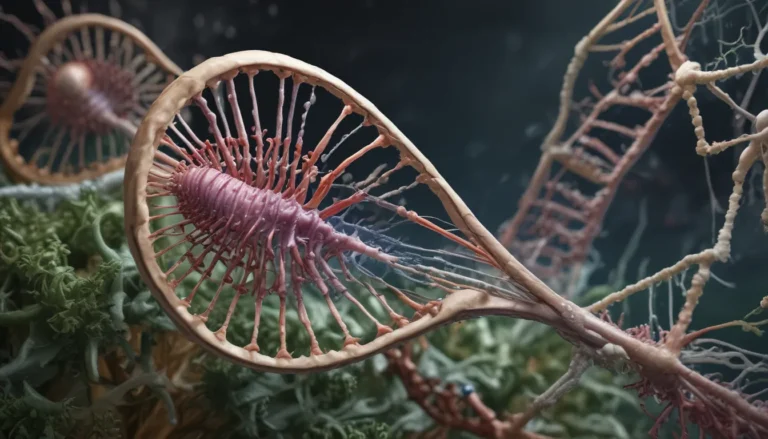A Note About Images: The images used in our articles are for illustration purposes only and may not exactly match the content. They are meant to engage readers, but the text should be relied upon for accurate information.
Biomechanics, the captivating field that melds biology with mechanics, offers a profound understanding of how living organisms move and function. From enhancing athletic performance to revolutionizing prosthetics, biomechanics has far-reaching applications in various sectors, including sports, medicine, engineering, and robotics. In this article, we will uncover 10 extraordinary facts about biomechanics that showcase its remarkable contributions to our understanding of the natural world and its potential for innovation. So, let’s delve into the captivating world of biomechanics and discover the wonders it has to offer!
The Intricate Study of Biomechanics
Biomechanics delves into the mechanical forces acting on biological systems, merging principles from physics and biology to unravel how living organisms move and function. By exploring the forces, structures, and movements within the body, biomechanics provides valuable insights into various biological processes.
Advancements in Prosthetic Limbs
One remarkable application of biomechanics lies in the development of artificial limbs and prosthetics. By studying the mechanics of human movement, biomechanists can create advanced prosthetic limbs that closely mimic the natural functions of missing body parts. This innovative approach enables individuals to regain mobility and independence.
Optimizing Athletic Performance
Athletes worldwide benefit from biomechanics by optimizing their performance and preventing injuries. Through meticulous analysis of movement patterns and forces, biomechanics offers valuable insights to athletes, coaches, and trainers. It aids in refining techniques, reducing injuries, and enhancing overall athletic prowess.
Ergonomics and Workspace Design
Biomechanics plays a pivotal role in ergonomics by improving workspaces to minimize strain and fatigue on the body. By applying biomechanical principles, ergonomists can design ergonomic workstations that boost worker productivity and reduce the risk of musculoskeletal disorders.
Enhancing Sports Equipment Design
The realm of biomechanics extends to sports equipment design, where biomechanical analysis helps in refining gear to enhance performance and safety. From running shoes to tennis rackets, biomechanics ensures optimal performance and minimizes the risk of injuries for athletes.
Orthopedic Understanding and Treatment
Orthopedic biomechanics focuses on studying the mechanics of bones, joints, and muscles, contributing to the diagnosis, treatment, and rehabilitation of various orthopedic conditions. This knowledge is invaluable in managing fractures, osteoarthritis, ligament injuries, and other musculoskeletal ailments.
Innovations in Robotics and Exoskeleton Technology
The principles of biomechanics serve as a cornerstone in the development of robotics and exoskeleton technology. By studying human biomechanics, engineers can design robots and exoskeletons that emulate human movements and functions, with applications in healthcare, rehabilitation, and industrial automation.
Forensic Applications of Biomechanics
Forensic biomechanics applies biomechanical principles to analyze and reconstruct accidents, falls, and medical situations. This application aids in determining the causes and circumstances of injuries or incidents, offering valuable insights for forensic investigations.
Advancements in Surgical Techniques and Medical Devices
Impeccable understanding of the biomechanics of tissues and organs paves the way for improved surgical techniques and medical devices. This research leads to enhanced outcomes and better patient care, showcasing the far-reaching impacts of biomechanics in the medical field.
Rehabilitation Therapy and Biomechanics
The marriage of biomechanical analysis with rehabilitation therapy results in tailored programs for individuals recovering from injuries or surgeries. These programs focus on restoring mobility, strength, and functionality, enabling individuals to regain quality of life post-injury.
The field of biomechanics is a dynamic realm that spans various applications, from enhancing athletic performance to revolutionizing medical treatments. These extraordinary facts about biomechanics highlight its pivotal role in advancing our understanding of the human body and elevating our overall quality of life.
Embracing the Marvels of Biomechanics
In essence, biomechanics serves as a gateway to understanding the intricate movements of living organisms and the structural complexities that underpin efficient locomotion. By embracing biomechanics, we unveil extraordinary facts that shed light on the wonders of nature, sparking innovation across industries like sports, medicine, and engineering.
Whether dissecting the precise movements of an Olympic athlete or unraveling the flight dynamics of a bird, biomechanics enables us to marvel at the remarkable capabilities and adaptations present in the natural world. The intersection of art and science in biomechanics offers endless opportunities for exploration, celebrating its impact on various facets of our lives.
Frequently Asked Questions
Q: What is biomechanics?
A: Biomechanics is the study of the mechanical properties, movements, and forces produced by living organisms. It integrates principles from biology, physics, and engineering to understand how biological structures function and interact with their environment.
Q: What are some applications of biomechanics?
A: Biomechanics finds applications in sports, medicine, engineering, robotics, and ergonomics. It helps enhance athletic performance, design prosthetics, prevent injuries, improve workspaces, and optimize surgical techniques, among other advancements.
Q: How does biomechanics benefit athletes?
A: Biomechanics offers insights for athletes by analyzing their movements, techniques, and injury risks. By understanding force distribution, joint angles, and energy expenditure during activities, athletes can optimize their performance and reduce the likelihood of injuries.
Q: Can biomechanics aid in injury prevention?
A: Yes, biomechanics plays a crucial role in identifying risk factors for injuries and developing strategies to prevent them. By analyzing movement patterns and forces, biomechanics helps in minimizing injury risks, particularly in sports where proper technique is vital.
Q: In what ways is biomechanics used in medical research?
A: Biomechanics contributes to medical research by understanding injury mechanisms, testing medical devices, studying movement disorders, and designing rehabilitation programs. Researchers leverage biomechanical principles to enhance treatments and interventions for improved patient outcomes.
As we journey through the vast landscape of biomechanics, we uncover the intricate interplay between living organisms and their surroundings. From the awe-inspiring impact of National Biomechanics Day to the surprising dynamics shaping our world, each revelation in biomechanics offers a glimpse into the harmonious fusion of art and science.
At the core of our mission is a commitment to delivering engaging and trustworthy content, sourced from real users to provide diverse insights and information. With meticulous editorial review ensuring accuracy and authenticity, we strive to offer a platform where facts are not just fascinating but also grounded in credibility. Trust in our dedication to quality as you embark on a journey of exploration and discovery with us.






